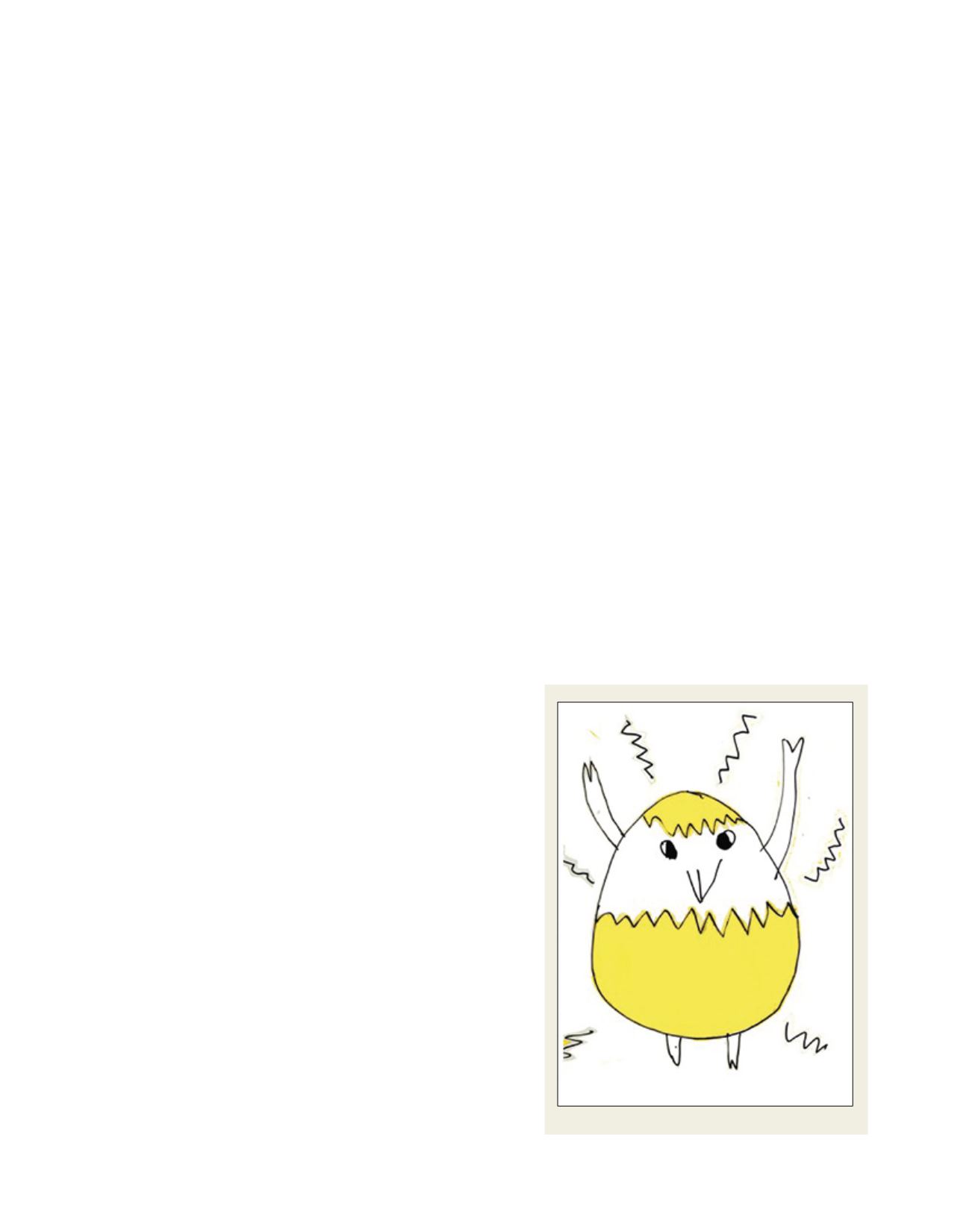

[
] 184
dren, such as: “Where does life come from?”, “Why
are eggs different from each other?”, “Can a baby
chicken have chickens?” and “Does the egg come
out the same way as poo?” They also asked about the
chickens’ everyday life: “Can they go out?”, “Can they
fly?” and “How can they find the worms?”
From their own questions and from what they
learned from their examinations, the children soon
realised that chickens may live under a variety of
circumstances. They found that many of them live in
small, narrow cages without a place to sit, and have
to stay indoors all their lives. The children wanted to
know where the eggs they usually eat at school came
from. When they were told that they came from chick-
ens that were kept in small cages and unable to go
outdoors, they got very upset. They decided to stop
eating eggs. Together with their teachers, they went to
the people responsible for the school’s purchases with
their protests and complaints about the way the chick-
ens producing the eggs were treated. Their protest led
to changes in the municipal authorities’ and parents’
purchasing habits – they started to buy ecological eggs
from a place where the chickens could go out and live
a good life
8
.
Above we have an example of how children can
take part in a search for knowledge that is related to
nature, economy and social aspects of learning for
sustainable development. Lifestyle has to do with
what kind of eggs you buy, which is closely related
to values. But it is also related to the economy, as
organic eggs are more expensive, which may lead
mal and non-formal education and early childhood education were
able to reach general recommendations for ESD. At this workshop
it was recognized that ESD is a question of life-long learning that
has to begin in the early years. Furthermore, the Mid-Term Review
of the DESD held in Bonn, 2009, recognized that early childhood
education had not been taken into consideration when reviewing
what had been done in this field.
6
The Organisation Mondiale pour l’Éducation Préscolare (OMEP)
was founded in 1948 as a professional non-governmental organi-
zation for early childhood education and peace education, but its
mission and action plan is now devoted to ESD in early years. OMEP
has produced a special issue on research in ESD and early childhood
in the
International Journal of Early Childhood (2009).
7
An interna-
tional interview study based on OMEP’s motto (‘World Congress
2010: Children – citizens in a challenged world’), is currently under
way in more than 30 countries, which means that about 9,000 chil-
dren from all over the world are involved.
A new world project based on activities with children involving
some of the notions of the 7Rs (see below) will take place within
OMEP next year and we believe it will provide many examples of
good practice. A simple introduction to the field has, in fact, already
been published in a small booklet for early childhood staff.
8
Work with preschool children in the area of ESD
What does it mean then, to work with young children in the area of
ESD? One approach is based on a number of notions (7Rs) that the
practitioner is supposed to put into practice with young children.
The 7Rs are: respect, reflect, reduce, reuse, repair, recycle
and responsibility. ‘Reduce’ is about reducing the consump-
tion of food, materials and resources such as water, paper and
plastic. This may include working with parents on the problem
of children’s exposure to advertisements promoting endless
consumption. ‘Reuse’ is about showing children that materials
can be reused for different purposes in preschool and at home.
‘Recycling’ can be encouraged by asking children to bring recy-
clable materials to school and integrating them into a range of
activities. ‘Repair’ can be to take care of broken toys and other
objects and repair them. ‘Respect’ is about nurturing under-
standing of and respect for nature and natural processes, and
reducing the extent to which they are violated in many ways.
‘Responsibility’ can be to trust children to take care of something
or be able to do something they can feel proud of; and ‘reflect’ is
a habit and skill everybody will benefit from in working towards
sustainability.
All these notions are easily recognized in everyday life with
children. A lot of these things are carried out as part of preschool
practice in many classrooms, for example, recycling. But it is not
enough to simply do it; we also have to focus on communication
and interaction to make children aware of how actions are related to
a sustainable world, on a level they can make sense of.
Another example is work on the theme ‘life’, carried out with chil-
dren ranging from four to six years of age in a Swedish preschool.
The theme of nature that children and teachers considered
initially was “What is life?” The focus then moved towards hens
and chickens, and the children asked, for example: “Why are there
chickens in some eggs, but not in others?” They also asked how
life could begin in a chicken. To find out about this, they decided
to read books about it and ask someone they thought would know
about this phenomenon. Many questions were posed by the chil-
“What is life?” Preschool project, Värmdö, Sweden
Image: Göteborgs universitet
















